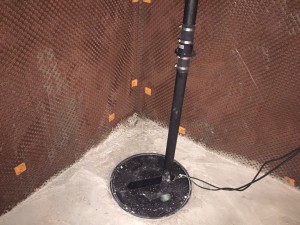20 Jan Why your Sump Pump fails?
The sump pump is an integral part of a standard basement waterproofing system. It is the part that conveys water from the sump pit in your basement to the exterior. A failing sump pump can happen at any time, and when it does, many homeowners don’t realize there is a problem until the basement floods.
Reasons for Sump Pump Failure
- Overworked pump – One sump pump may not always be enough especially the cheap plastic ones. Large volumes of water can flood the basement faster than the sump can stop it. However, installing two pumps may h
 elp.
elp. - Clogged sump pumps – If the sump pump is sitting on the bottom of a dirty sump pit, its mechanical parts are liable to clog with dirt and debris. If this interferes with the pump’s operation, the system will slow or stop.
- Sump pump won’t stop running – Generally, sump pumps run in intervals – turning on from time to time only as needed. Pumps that run continuously will wear out quickly and increase electricity cost. This may occur if the sump pump switch gets stuck on the “on” position; if the pump is too small for the job or if the liner is too small for the sump; the check valve may be missing or not working properly; the sump pit may be set too low in the ground.
- Clogged drains – If the discharge drains are clogged with debris, sticks, dirt, ice, or snow; water will not be able to exit. This will cause the system not to work properly.
- Lost of power to the sump pump – for example, electricity failure.
Sump pumps with battery backup are becoming more common due to electricity failure.
It’s also important to have your sump pump system serviced and checked after a major storm or any extreme weather especially when the system is left to operate for prolonged periods. In a system with a battery backup, the charge of the battery should also be checked.
Most waterproofing companies recommend yearly checkup and maintenance.





No Comments